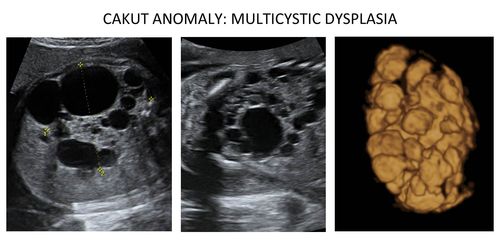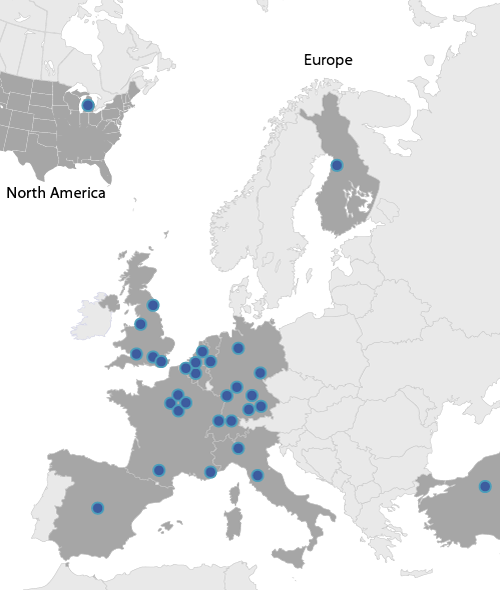WP06 - Congenital Abnormalities of the Kidney and Urinary Tract
Objectives
- To identify novel genes involved in causing CAKUT
- To establish the genetic networks which drive renal development
- To functionally characterize CAKUT genes using different model systems
- To define prenatal (advanced) imaging and prognostic biomarkers for CAKUT
- To develop and implement a novel DNA diagnostic tool for CAKUT
Workpackage Description
Congenital anomalies of the kidney and urinary tract (CAKUT)
CAKUT comprise a spectrum of structural abnormalities of the kidney and urinary tract that occur in 1:500 foetuses and cause death early after birth in 1:2000 live-born children. The CAKUT spectrum encompasses absence of kidneys (renal agenesis), hypoplasia (reduced number of nephrons) malformed cystic kidneys (multicystic dysplasia figure 1), double renal collecting system, and abnormalities of the tracts, which connect the kidneys with the bladder (ureters). CAKUT constitutes the major cause (70%) of end-stage renal disease in children, which is a devastating disease with a major impact on growth, maturation, and disturbed cognitive development. Patients become dependent on chronic dialysis and/or transplantation and have a poor life expectancy. Therefore knowledge of the causes of CAKUT and the identification of reliable prognostic biomarkers is essential for early and correct diagnosis, prediction of the risk for progressive disease, and the development of personalized therapies to protect the function of the kidney.

- Figure 1: Left two pictures: Ultrasound of the kidney showing the multiple cysts (dark holes). Right picture: 3-D ultrasound allowing to determine kidney volume.
Interestingly, in 10-15% of CAKUT patients, renal abnormalities are found in close relatives. CAKUT can occur as an isolated disorder or develop in association with additional congenital abnormalities outside the urinary tract, the so-called syndromal forms of CAKUT. Familial clustering and the occurrence of these syndromal forms point towards major genetic causes for CAKUT. In the majority of CAKUT cases however, the causal gene mutations have not yet been found, in spite of great effort. Based on studies in animal models, it is believed that mutations in genes involved in kidney development may form the major underlying cause of CAKUT. However, we are far from understanding the complete set of genes (and their interaction) involved in renal development.

- Figure 2: Developing mouse kidney (embryonic day 18.5) stained for cell type specific markers that highlight developing structures often affected in CAKUT patients (blue=WT1; green=PAX2; red=DBA).
Patient Cohort
In previous years, the various groups gathered in this workpackage have recruited a cohort of more than 2000 isolated patients and 45 families with CAKUT. All variable phenotypes within the CAKUT spectrum are represented within this cohort. This unique cohort is the largest CAKUT patient collection worldwide, facilitating large-scale investigations of genetic factors predisposing for CAKUT.
The availability of this large patient cohort, of novel next generation genetic techniques and of several new sophisticated tools to unravel the network of genes involved in kidney development, has created great opportunities to fill the gap in knowledge of the genes (and their interaction) involved in renal development and CAKUT.
WP Leader
Prof. Nine Knoers (Deputy: Kirsten Renkema)
University Medical Centre Utrecht
Participating Partners
Heidelberg University Medical Center
INSERM U983
INSERM UMRS 970
INSERM U1048
University Medical Centre Utrecht
University College London - Institute of Child Health
Katholieke Universiteit Leuven
University of Oulu - Biocenter
Metabometrix Ltd.
Multiplicom Inc.
Comprehensive Biomarker Center
mosaiques diagnostics GmbH
Karlsruher Institute of Technology






